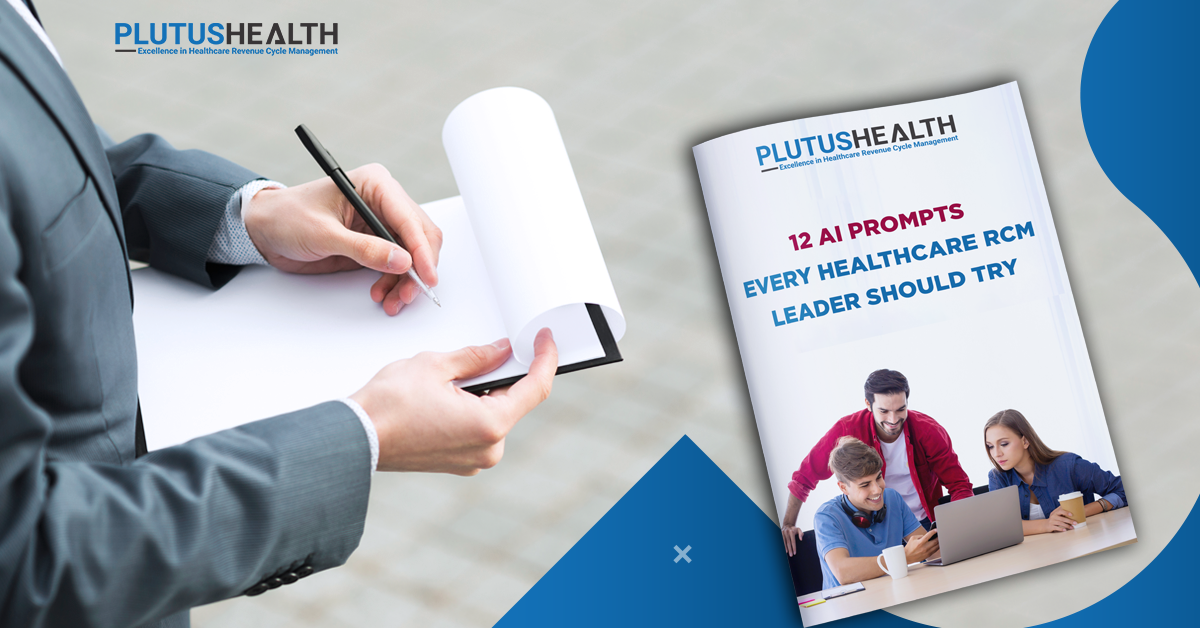6 Common Challenges in Telehealth Billing and Ways to Overcome Them
Covid-19 surged telehealth into widespread use. Virtual care claims rose by 3,060% between October 2019 and October 2020. This popularity spurred CMS to remove certain telehealth coverage restrictions.
These government adjustments are temporary, but telehealth prevalence is expected to last. Many patients and professional care providers realize the convenience virtual care offers. To meet this demand, investors are pouring money into telehealth at record rates.
Mental health providers have committed to digital visits since the field rarely requires physical examinations. ABA practices must learn the problems associated with a sudden rise in virtual care.
Here are six common telehealth billing challenges.
Cross-State Telehealth Regulations
Telehealth allows providers to serve a patient from another state remotely. While this ability can be circumstantially beneficial, it often causes problems. States hold unique certification and treatment requirements. Providers must earn licensing from the state to treat consumers in that area. This process can be time-consuming and cost-ineffective.
During the pandemic, CMS declared a public health emergency (PHE) that lifted many cross-state restrictions. So, providers have taken on patients they previously would have rejected. After the PHE, physicians may need to choose between out-of-state patients and a lengthy certification process.
Telehealth Coding Limitations
Despite CMS’s expansion of telehealth coding, the field still has significant limitations. For most sectors, virtual care coding adheres to the following basic structure:
● Medical Telehealth Visits: A virtual visit between an established or new patient and a provider.
● Virtual Check-in: A quick check-in between an established patient and a provider using a telecommunications device to determine whether an in-person visit is necessary.
● E-visits: For established patient/provider communications through an online portal.
While these categories cover the basic types of care telehealth offers, specificity is still limited. Ideally, CMS will introduce new codes that empower staff to increase service classification detail.
Telehealth Reimbursement Discrepancy
Reimbursement amounts for telehealth services are still significantly lower than in-person visits. To combat this problem, 29 states have instituted virtual care price parity laws. However, current mechanisms to enforce these laws are underdeveloped.
Mental Health Billing Problems
Medicare reimburses mental health telehealth if the service uses audio and video. Audio-only services exclusively receive coverage during the PHE. While Medicaid specifics change with different states, the general trend is to match Medicare’s standards. The following codes are Medicare non-reimbursable:
● 96110: Developmental screening and testing
● 96170, 96171: Health behavior intervention, family without patient
● 90875: Psychophysiological therapy
Necessary EHR Adoption
EHRs have dominated the patient information transfer landscape since 2014. The records quickly offer critical, detailed information. However, a practice subset has failed to adopt EHRs for practical reasons.
Using EHRs requires significant security precautions that many providers can’t quickly meet. Maintaining a system that directly communicates sensitive information with other practices is challenging. Despite these difficulties, increased telehealth adoption may force holdouts to integrate EHRs, using significant resources.
Medical Cybersecurity Threats
As more practices store critical patient documents digitally, healthcare data breaches are becoming increasingly prevalent. Providers that transmit consumer data must invest in cybersecurity.
Plutus Health has adapted to the prevalence of telehealth billing. We’ve taken the limited virtual care codes CMS offers and have maximized revenue generation. Thanks to this efficiency, our customers have remained secure during the telehealth craze. Visit our website to learn how our virtual care experts can strengthen your RCM.
Key Takeaways
1. Current relaxed in cross-state regulations may end which will result in providers needing to gain certifications.
2. Telehealth codes still fail to provide the detail of their in person care alternatives.
3. Reimbursement rates for telemedicine fall short of industry standards.
4. CMS limits mental health virtual care coverage.
5. EHRs may cease to be a commodity and become a necessity.
6. Cybersecurity threats have reached an all-time high due to rise in virtual storage.
Liked the blog? Share it
FAQs


ABA providers are grappling with high staff turnover (up to 65%), rising burnout, administrative overload, and stagnant reimbursement rates. These challenges directly impact care continuity, clinical outcomes, and operational performance.


Operational inefficiency costs ABA teams up to 10 hours per staff member per week, contributing to burnout, denied claims, and longer accounts receivable (A/R) cycles. These inefficiencies ultimately result in reduced revenue and patient dissatisfaction.


Burnout leads to costly turnover, lower client retention, and decreased productivity. Recruiting and replacing a BCBA or RBT can cost up to $5,000 per hire, plus months of lost revenue and disruption to morale.


High-performing ABA organizations invest in clear career pathways for BCBAs and RBTs, align compensation with market benchmarks, and foster peer-led mentorship, flexible schedules, and wellness programs.


Automation tools like Plutus Health's Zeus streamline eligibility verification, denial management, and billing, reducing manual workloads by 5–10 hours weekly per clinician and improving clean claim rates by 95%.


Outsourcing revenue cycle management can improve collections, reduce denials by up to 30%, and free clinicians from billing-related admin tasks, resulting in better client care and financial outcomes.


One $200 million ABA network partnered with Plutus Health to automate eligibility and accounts receivable (A/R) processes. The result: $2M reduction in legacy A/R and a 97% Net Collection Rate.


By improving operational efficiency, investing in technology, and ensuring workforce stability, ABA leaders can align outcomes with reimbursement. Plutus Health supports this transition with scalable RCM and automation strategies.
FAQs


ABA therapy billing is the process of submitting claims to insurance or Medicaid for Applied Behavior Analysis services provided to individuals with autism or developmental disorders. It includes using correct CPT codes, proper documentation, and adherence to payer-specific policies.


Common CPT codes for ABA therapy in 2025 include:
- 97151 – Assessment and treatment planning
- 97153 – Direct therapy with the patient
- 97155 – Supervision and modification of behavior plan
- 97156 – Family adaptive training
- Always check with payers for any annual changes.


To bill Medicaid for ABA services, providers must ensure credentialing is complete, services are pre-authorized, and claims use the correct codes and modifiers. Medicaid requirements vary by state, so always follow state-specific billing rules.


Common ABA billing mistakes include:
- Incorrect or missing CPT codesplan
- Lack of documentation or treatment
- Uncredentialed providers rendering services
- Submitting duplicate or late claims


Without proper credentialing, providers can’t get reimbursed. Insurance and Medicaid require that BCBAs, RBTs, and organizations are credentialed and contracted. Delays in credentialing often cause revenue losses and claim rejections.
FAQs


CMS proposes a 2.4% increase in Medicare ASC payment rates, contingent on meeting ASCQR quality reporting requirements. Plutus Health helps ASCs meet these compliance benchmarks by integrating quality reporting data into RCM workflows, ensuring eligibility for full payment updates.


The ASC Covered Procedures List will expand by 547 procedures, including cardiology, spine, and vascular surgeries. Plutus Health supports expansion into new service lines by customizing RCM processes for high-acuity procedures, minimizing claim denials during the transition.


Site-neutrality narrows the payment gap with hospital outpatient departments, enhancing ASCs' cost-efficiency appeal. Plutus Health helps leverage this advantage in payer negotiations by providing performance dashboards and cost-justification analytics to secure stronger reimbursement terms.


Complex procedures increase denial risk and slow cash flow. Plutus Health's automation-first RCM model delivers 95%+ clean claim rates, reduces A/R days, and safeguards margins, even as your case mix becomes more complex.
FAQs


A hybrid RCM model combines in-house tasks like scheduling, intake, and patient communication with outsourced billing support for claims, denials, and A/R follow-up. Plutus Health enables this model with automation and expert teams.


Frequent CPT code updates, variable session lengths, high no-show rates, and sensitivity around patient collections make behavioral health billing uniquely challenging. Hybrid RCM helps strike a balance between compliance and patient care.


Tasks requiring patient interaction—like intake, eligibility checks, copay collection, and documentation—are best kept in-house, while backend processes can be outsourced.


Outsourcing denial management, claims scrubbing, and payment posting improves clean claim rates, reduces A/R days, and scales capacity without adding staff.


Plutus Health delivers 97%+ clean claim rates, AI-powered denial prediction, and 48-hour claim turnaround. Our hybrid RCM solutions provide behavioral health CFOs with visibility and control, while enhancing financial performance.
FAQs


Payment complexity, high out-of-pocket costs, increasing denials, and value-based care requirements are pushing providers toward more transparent, tech-supported payment systems.


Patients now act like consumers. They expect clear cost estimates, simple bills, digital payment options, and flexible financing.


AI, automation, and digital tools streamline estimates, reduce denials, support payment plans, and allow faster collections through mobile and online payments.


Complex billing questions, insurance confusion, and financial stress require a compassionate approach. Advocates guide patients and protect trust in clinical care.


Plutus Health supports providers with AI-driven denial prevention, predictive analytics, digital payment tools, patient financing, and a seamless platform, such as AnodynePay.


















































